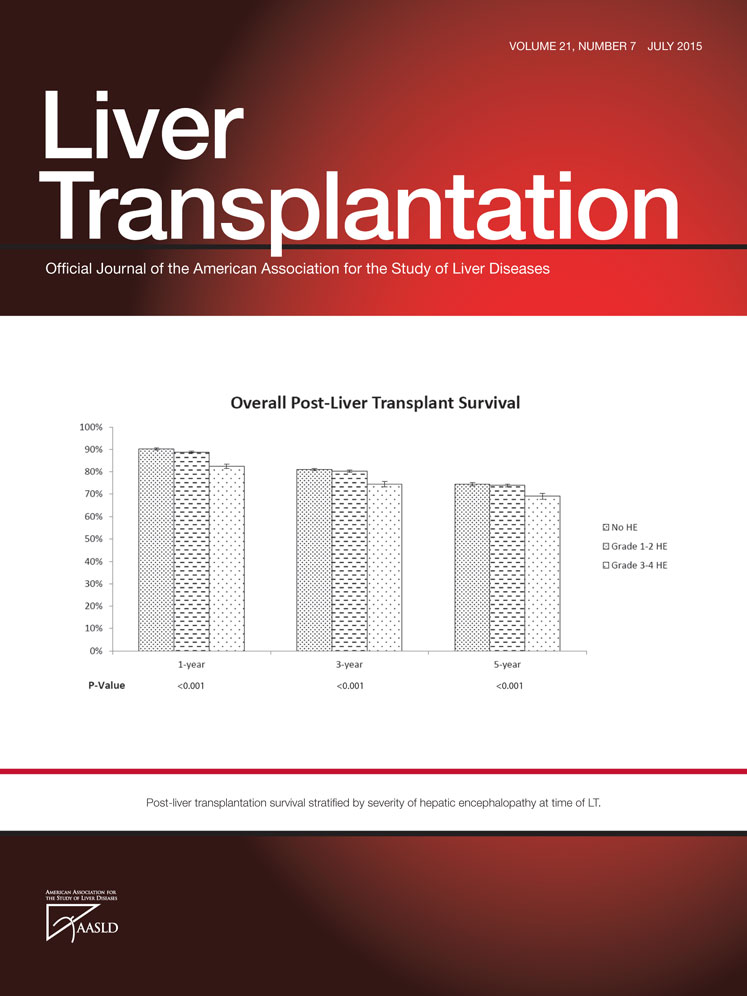Impact of multiple transarterial chemoembolization treatments on hepatocellular carcinoma patients awaiting liver transplantation
We read with interest the article by Terzi et al.1 regarding the use of transarterial chemoembolization (TACE) on hepatocellular carcinoma (HCC) patients awaiting liver transplantation (LT). Primarily the authors were looking to evaluate the impact of treatment on tumor necrosis, recurrence, and overall survival following LT.1
The outcomes for patients in this series were excellent, but we believe there are points worthy of additional comment. It would have been useful to have included the number of patients listed for LT who received TACE but who subsequently progressed beyond the listing criteria. This would have helped us gauge the proportion of patients who drop out despite initially being eligible for transplant. This would have provided us with an indirect measure of treatment efficacy. For patients within Milan criteria, the use of chemoembolization is associated with reduced drop-out rates.2
The second issue relates to the interpretation of better survival among patients who waited longer for LT. This may well reflect tumor biology, but as alluded to in the article, patients receiving more cycles of TACE may do better than those receiving a single treatment, although this did not reach statistical significance. Thus, the poorer outcome may suggest undertreatment of the tumor rather than more aggressive hepatomas. This again would be further clarified by reporting patients who were listed but not transplanted. Moreover, the 3 months between treatments seems long and could further suggest suboptimal treatment of the lesions. Finally, the authors did not highlight different cirrhosis etiologies in their analysis. This could lead to unforeseen bias and possible inappropriate conclusions to be drawn.
In summary, the work of Terzi et al.1 is very useful and intriguing. Also, a collective effort from the transplant community to evaluate the impact of bridging therapies and waiting time on the list in larger multinational studies would appear to be called for on the basis of this work.
-
Timothy Cross M.D., MRCP
-
Adli Metussin M.B.B.S., MRCP(UK)
-
Department of Gastroenterology and Hepatology
-
Royal Liverpool University NHS Trust
-
Liverpool, United Kingdom




